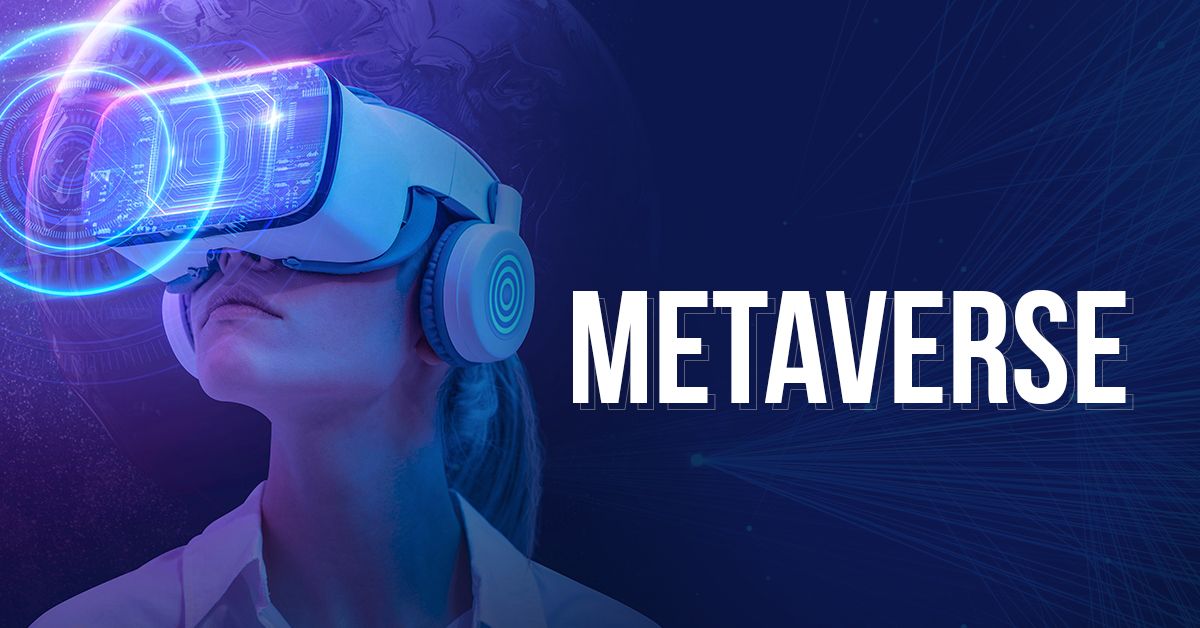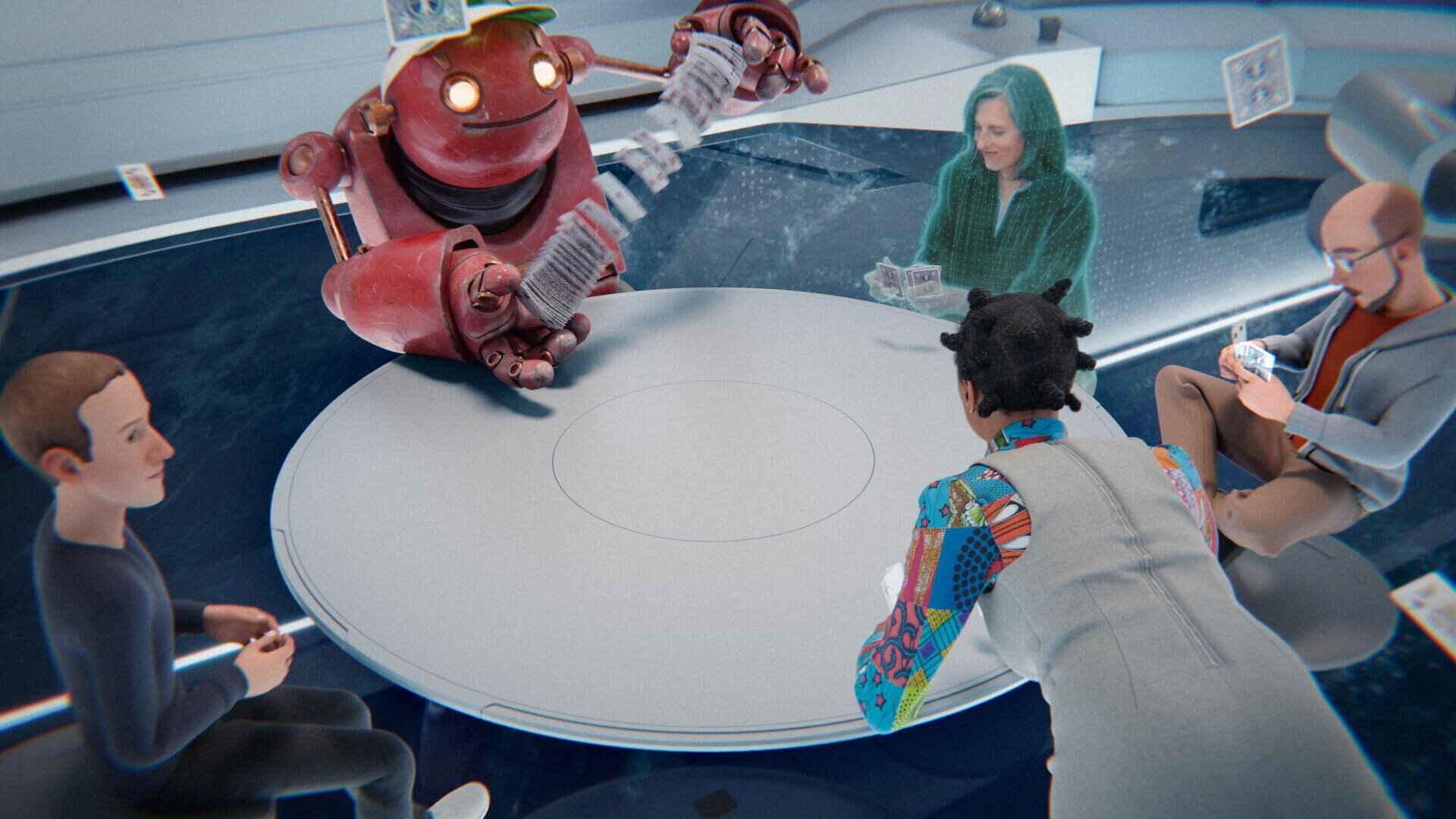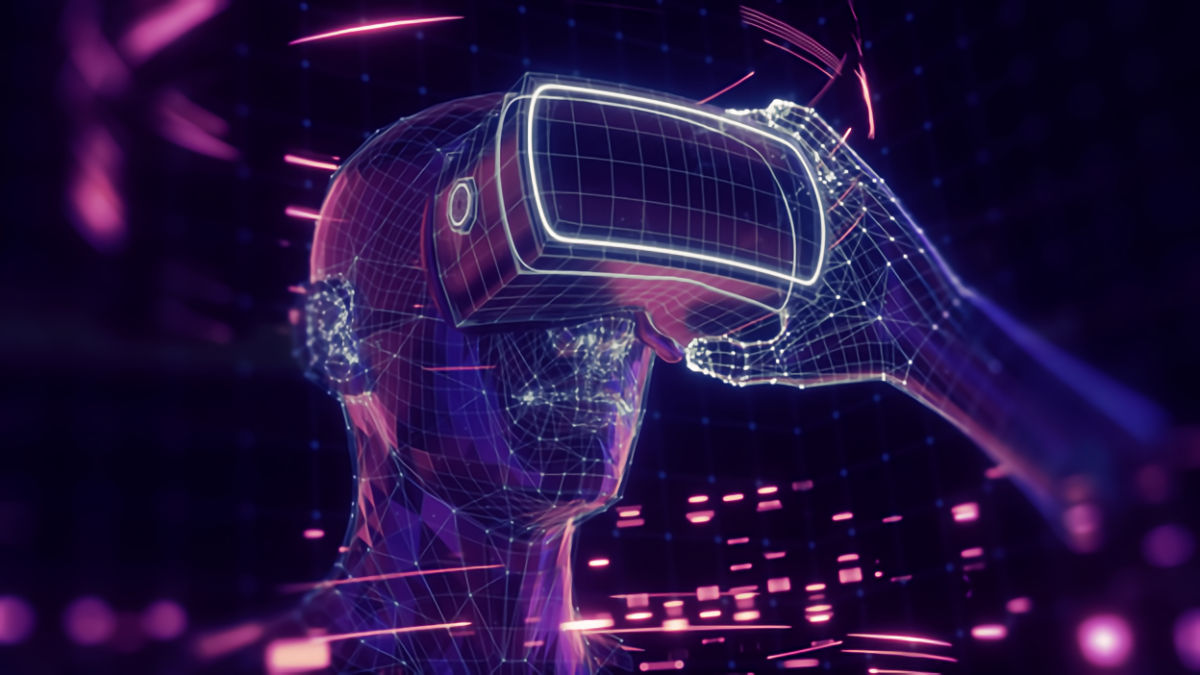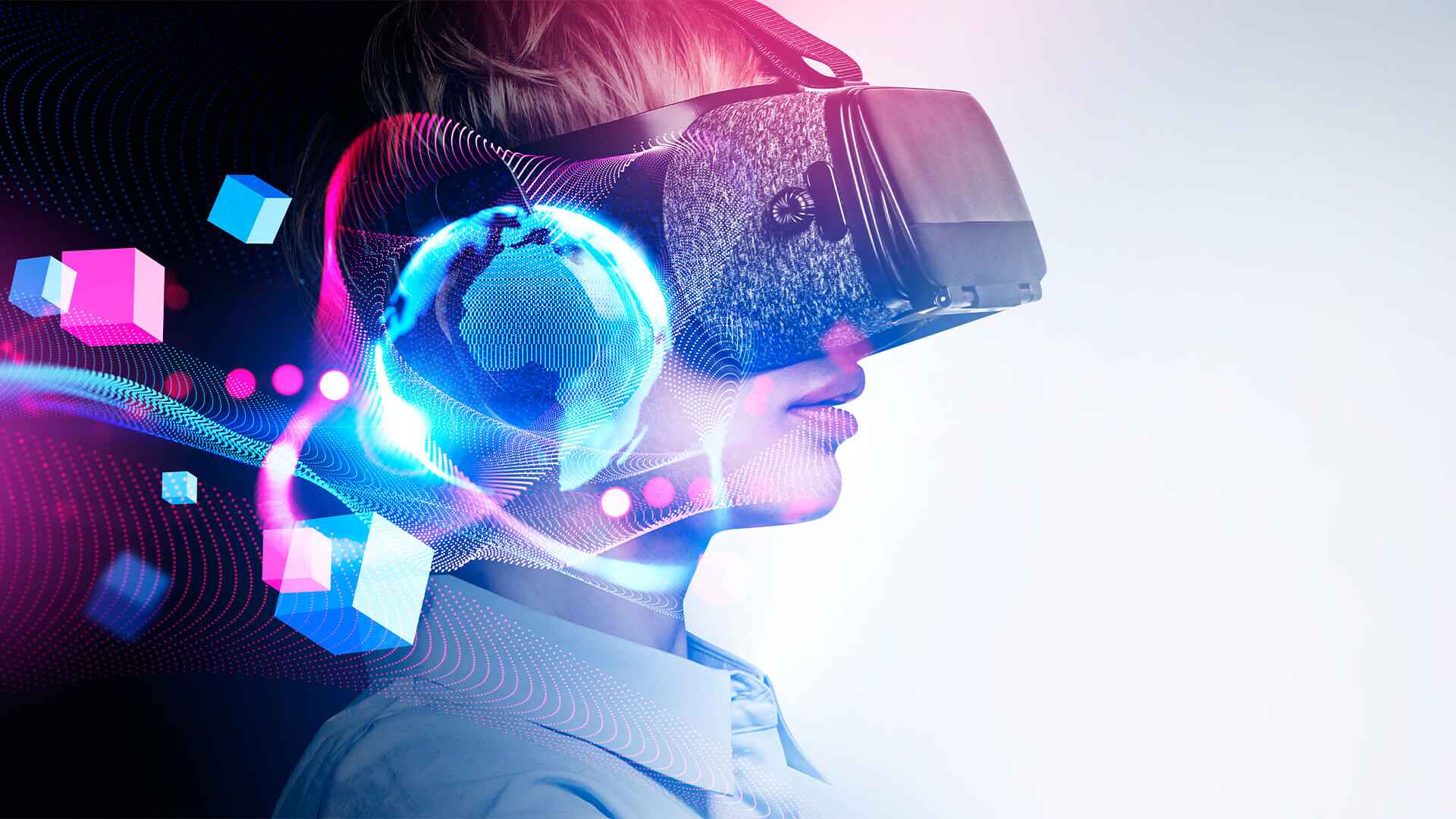Introduction
The concept of a metaverse has gained significant attention in recent years, sparking the imagination of developers, entrepreneurs, and tech enthusiasts alike. The term “metaverse” refers to a virtual realm where users can interact with each other and digital objects in a highly immersive and interconnected environment. It is often described as the next evolution of the internet, offering a seamless integration of physical and online experiences.
The idea of the metaverse has its roots in science fiction and has been popularized through books, movies, and video games. However, recent advancements in technology, such as virtual reality (VR), augmented reality (AR), blockchain, and artificial intelligence (AI), are bringing us closer to the realization of a functional metaverse. Companies and developers are actively exploring various metaverse technologies to create immersive and interactive digital worlds that can be accessed by anyone with an internet connection.
The appeal of the metaverse lies in its potential to revolutionize how we live, work, and interact. It could open up new opportunities for communication, entertainment, education, business, and much more. Imagine attending virtual meetings in stunning 3D environments, exploring virtual museums and exhibitions, or even shopping in virtual stores with friends from around the world.
The metaverse is not limited to a single platform; rather, it encompasses a diverse range of technologies and platforms working collaboratively to create a cohesive virtual ecosystem. These technologies include VR and AR headsets, game engines, blockchain and cryptocurrency, web3 technologies, AI, and social and collaborative spaces.
In this article, we will explore these metaverse technologies in more detail, discussing how they work, their potential applications, and the challenges they may face. By understanding the components that make up the metaverse, we can gain a clearer picture of the future possibilities and implications of this emerging digital realm. So, let’s dive into the world of the metaverse and uncover the exciting technologies that are shaping its future.
Definition of Metaverse
The term “metaverse” is often used to describe a virtual reality space that encompasses all virtual worlds and shared online environments. It is a collective term for interconnected virtual realities, where users can interact with each other and digital objects in real-time. Unlike traditional online platforms or games, the metaverse aims to create a seamless and immersive experience that blurs the boundaries between the physical and digital worlds.
The concept of the metaverse goes beyond a simple virtual reality experience. It envisions a complex and interconnected network of virtual environments, spanning different platforms, devices, and applications. It is a shared space where users can create, explore, socialize, and transact in a digital realm that is constantly evolving and expanding with user-generated content.
One key aspect of the metaverse is its persistence. In a traditional online game, once the player logs out, their progress and interactions within the game world are temporarily halted. However, in the metaverse, the virtual world continues to exist and evolve even when individual users are not present. This persistence enables a sense of continuity and allows for ongoing collaboration and interaction between users.
Another defining characteristic of the metaverse is its interoperability. Rather than being confined to a specific platform or game, the metaverse aims to connect different virtual worlds and platforms seamlessly. This means that users can move between different virtual environments and carry their digital identity, assets, and experiences with them. For example, a user may have a virtual avatar that can travel from a virtual reality game to a social virtual space without losing progress or customization.
The metaverse also emphasizes user agency and creativity. Users are not just passive consumers but active participants in shaping the virtual world. They can create and customize their virtual avatars, design and build virtual objects and spaces, and contribute to the overall development of the metaverse through user-generated content. This user-driven approach fosters a sense of ownership and empowerment, as individuals can express themselves and pursue their own goals within the metaverse.
In summary, the metaverse can be defined as a virtual reality space that integrates various platforms, devices, and applications into a seamless and interconnected digital realm. It offers persistence, interoperability, and user agency, allowing for socialization, exploration, creation, and collaboration on a scale never before seen in the online world.
How Metaverse Technologies Work
Metaverse technologies leverage a combination of cutting-edge tools and systems to create immersive and interconnected virtual environments. These technologies work together to enable seamless interactions, real-time communication, and the creation of user-generated content within the metaverse. Let’s explore some of the key components that make up the infrastructure of the metaverse.
Virtual Reality (VR) and Augmented Reality (AR) are fundamental to the metaverse experience. VR technology immerses users in a complete virtual environment, typically achieved through the use of specialized headsets. AR, on the other hand, overlays digital content onto the real world, enhancing the user’s perception of reality. Together, VR and AR technologies enable users to perceive and interact with virtual objects and spaces, creating a sense of presence within the metaverse.
Game engines serve as the foundation for the creation and rendering of virtual worlds within the metaverse. These software frameworks provide the tools for developers to design and build immersive 3D environments, define the physics and interactions within the virtual world, and create dynamic and realistic graphics. Game engines not only power metaverse games but also serve as platforms for other applications, such as virtual events and simulations.
Blockchain and cryptocurrency technologies play a significant role in enabling decentralized economies within the metaverse. Blockchain provides a transparent and secure way to verify and record digital transactions and ownership of virtual assets. Cryptocurrencies, such as non-fungible tokens (NFTs), allow for unique and scarce digital items to be bought, sold, and traded within the metaverse. These technologies empower users to have true ownership and control over their digital assets, fostering a vibrant economy within the virtual space.
Web3 technologies and decentralization are essential for creating an open and accessible metaverse. Web3 protocols enable peer-to-peer interactions and eliminate the need for intermediaries, ensuring user privacy and security. By embracing decentralized infrastructure, the metaverse becomes more resistant to censorship and central control. This approach also allows for seamless integration across different platforms and services, enabling users to move more freely within the metaverse.
Artificial Intelligence (AI) is another crucial component of the metaverse. AI algorithms can enhance the user experience by providing intelligent and personalized interactions within the virtual environment. AI-powered characters and bots can simulate human-like behavior, enabling realistic social interactions and dynamic gameplay. Additionally, AI can assist in moderating and maintaining the metaverse by detecting and addressing abusive behavior or content.
Social and collaborative spaces are at the heart of the metaverse, promoting community engagement and interaction. These spaces can range from virtual social platforms and virtual marketplaces to virtual classrooms or virtual offices. They facilitate real-time communication, networking, and shared experiences, enabling users to socialize, collaborate, and transact within the metaverse.
In summary, metaverse technologies combine virtual reality, augmented reality, game engines, blockchain, web3 technologies, artificial intelligence, and social and collaborative spaces to create a cohesive and immersive digital environment. These technologies work together to enable seamless interactions, decentralized economies, personalized experiences, and vibrant communities within the metaverse.
Virtual Reality (VR) and Augmented Reality (AR)
Virtual Reality (VR) and Augmented Reality (AR) are integral components of the metaverse, providing users with immersive and interactive experiences within virtual environments. While VR and AR share similarities, they differ in how they deliver digital content and enhance the user’s perception of reality.
VR technology creates a fully immersive digital world that users can explore and interact with through the use of specialized headsets. These headsets, often equipped with motion sensors and controllers, track the user’s movements and translate them into corresponding actions within the virtual environment. By blocking out the real world and replacing it with a computer-generated reality, VR technology offers a sense of presence and immersion, enabling users to feel as if they are physically present in the virtual space.
AR, on the other hand, overlays digital content onto the user’s real-world environment, enhancing their perception of reality. AR can be experienced through various devices, such as smartphones, smart glasses, or heads-up displays. By blending virtual elements with the physical world, AR technology enables users to interact with digital objects and information in real-time. It can be used for various purposes, including gaming, navigation, education, and virtual try-on experiences in e-commerce.
Both VR and AR have their unique advantages and applications within the metaverse. VR offers a fully immersive experience that can transport users to entirely new worlds and environments. It is ideal for creating virtual games, simulations, and training programs. In contrast, AR enhances the user’s real-world environment by overlaying digital objects, information, and interactions, making it well-suited for applications like virtual tours, remote collaboration, and real-time data visualization.
The combination of VR and AR technologies within the metaverse opens up a wide range of possibilities. Users can seamlessly transition between VR and AR experiences within the metaverse, depending on their preferences and the specific context. For example, users can participate in a virtual concert in VR mode and then switch to AR mode to explore interactive exhibits in a virtual museum overlaying their physical surroundings.
Furthermore, VR and AR technologies facilitate social interactions within the metaverse. Users can connect with others, socialize, and collaborate in virtual spaces that mimic real-world environments or entirely fantastical settings. Through avatars or digital representations of themselves, users can see and communicate with one another, fostering a sense of presence and connection. These social aspects of VR and AR contribute to building vibrant and interactive communities within the metaverse.
In summary, VR and AR technologies are essential components of the metaverse, providing users with immersive and interactive experiences. While VR creates a fully immersive virtual world, AR enhances the user’s perception of reality by overlaying digital content onto the real world. Together, VR and AR offer a range of applications within the metaverse, from gaming and simulations to social interactions and real-time data visualization.
Game Engines and Virtual Worlds
Game engines and virtual worlds form the foundation of the metaverse, enabling the creation and rendering of immersive and interactive digital environments. Game engines are software frameworks that provide developers with tools to design, build, and simulate virtual worlds, while virtual worlds are the actual digital environments in which users can navigate, interact, and engage with others.
Game engines, such as Unity and Unreal Engine, are powerful platforms that offer a wide range of capabilities for creating virtual worlds. They provide tools for designing 3D models, defining physics and interactions, implementing audio and visual effects, and scripting the behavior of objects and characters in the virtual environment. These engines allow developers to bring their creative visions to life and facilitate the seamless interaction between users and the virtual worlds they explore.
Virtual worlds, within the context of the metaverse, are the immersive digital spaces where users can interact with each other, digital objects, and the environment itself. These virtual worlds can range from realistic simulations of real-world locations to entirely fictional and fantastical realms. Virtual worlds often incorporate elements of storytelling, gameplay mechanics, and social interaction to create engaging and dynamic experiences for users.
The creation of virtual worlds involves the design and development of various aspects, including the landscapes, architecture, avatars, and non-playable characters (NPCs) that inhabit the environment. Game engines provide the tools and functionalities necessary to bring these elements to life, from crafting detailed terrains and textures to implementing realistic physics and animations.
Additionally, virtual worlds within the metaverse can be persistent and continuously evolving. Unlike traditional video games where each session is isolated, virtual worlds in the metaverse can exist and develop even when users are not present. This persistence allows for real-time collaboration, ongoing exploration, and the emergence of dynamic ecosystems within the virtual environment.
Virtual worlds in the metaverse also foster social interactions and community building. Users can explore virtual worlds together, communicate through text or voice chat, form groups or guilds, and participate in collaborative gameplay experiences. Personalization and customization are key aspects of virtual worlds as users can create and customize their avatars, own virtual properties, and even contribute to the development of the virtual world through user-generated content.
Moreover, virtual worlds often offer a wide range of activities and experiences beyond gaming. They can include virtual marketplaces where users can buy, sell, and trade virtual goods and services, virtual concerts and events, educational simulations, virtual museums, and much more. Virtual worlds within the metaverse have the potential to transcend boundaries and offer unique opportunities for entertainment, learning, and social engagement.
In summary, game engines and virtual worlds are crucial components of the metaverse, providing the means to design and create immersive and interactive digital environments. Game engines offer the tools and capabilities for developers to bring their creative visions to life, while virtual worlds provide the platforms for users to explore, interact, and socialize within these digital realms. Together, game engines and virtual worlds lay the foundation for the metaverse, enabling the realization of diverse experiences and fostering a sense of immersion and community within the digital landscape.
Blockchain and Cryptocurrency
Blockchain technology and cryptocurrency play a significant role in the development and functioning of the metaverse, offering decentralized and secure platforms for transactions, ownership, and digital asset management. As the metaverse expands, blockchain and cryptocurrency technologies provide the necessary infrastructure to create and maintain decentralized economies within virtual environments.
At its core, blockchain is a distributed ledger that records transactions and data in a transparent and immutable manner. This technology ensures the integrity and security of digital interactions, making it ideal for managing virtual assets within the metaverse. Blockchain enables users to verify and validate ownership of virtual items, ensuring that digital assets are unique, identifiable, and cannot be duplicated or manipulated.
Cryptocurrency, especially non-fungible tokens (NFTs), has gained significant attention in the context of the metaverse. NFTs are unique digital assets that can represent ownership of various virtual items, including virtual real estate, virtual art, in-game collectibles, and more. NFTs are built on blockchain technology, providing a secure and transparent method for buying, selling, and trading virtual assets within the metaverse.
By leveraging blockchain and cryptocurrency, users within the metaverse can have true ownership and control over their virtual assets. This ownership extends beyond any particular platform or virtual world, allowing users to transfer their assets seamlessly between different metaverse environments. Users can also prove the authenticity and provenance of their digital items, establishing a trustless ecosystem where ownership and transactions are verifiable and reliable.
Furthermore, blockchain and cryptocurrency enable decentralized economies within the metaverse. Virtual assets and digital currencies within the metaverse can be traded and valued independently of centralized control or fiat currencies. This opens up opportunities for creators, artists, and developers to monetize their work directly and build sustainable business models within the metaverse.
Additionally, blockchain technology provides a means for implementing secure and transparent transactions within the metaverse. Smart contracts, which are self-executing contracts stored on the blockchain, enable automated and trustless interactions between users. Smart contracts can be used for various purposes, including the exchange of virtual assets, the distribution of rewards and incentives, and the establishment of virtual property rights within the metaverse.
While blockchain and cryptocurrency technologies offer numerous advantages for the metaverse, there are still challenges to overcome. Scalability, energy efficiency, and user experience are areas that require further development and improvement. As the demand for the metaverse grows, blockchain and cryptocurrency technologies will need to evolve to support a large-scale and seamless virtual environment.
In summary, blockchain and cryptocurrency technologies provide the infrastructure for decentralized transactions, ownership, and digital asset management within the metaverse. They enable users to have true ownership and control over virtual assets, establish decentralized economies, and facilitate secure and transparent transactions. As the metaverse continues to evolve, blockchain and cryptocurrency have the potential to reshape how virtual assets are created, valued, and traded within the digital landscape.
Web3 Technologies and Decentralization
Web3 technologies and decentralization are integral to the development of the metaverse, enabling open and interoperable virtual environments that prioritize user privacy, security, and control. Web3 technologies aim to redefine the way we interact with online platforms, shifting from centralized systems controlled by a few entities to decentralized networks governed by the community.
Traditional web platforms often rely on a centralized architecture, where data and control are concentrated in the hands of a few centralized entities. In contrast, Web3 technologies leverage blockchain, peer-to-peer networks, and decentralized protocols to ensure a distributed and autonomous digital infrastructure. This decentralized approach offers several advantages for the metaverse and its users.
Firstly, decentralization enhances user privacy and security within the metaverse. With Web3 technologies, users have more control over their personal data and digital identity. They can encrypt their data, selectively share it with trusted parties, and maintain ownership of their information. This decentralized model reduces the risk of data breaches and unauthorized access, providing a more secure environment for users to explore and interact within the metaverse.
Secondly, Web3 technologies enable seamless interoperability between different platforms and virtual worlds within the metaverse. Through open protocols and standards, users can easily transfer their digital assets, identities, and experiences between various metaverse environments. This interoperability allows for a more immersive, connected, and expansive metaverse, where users are not limited to a single platform or virtual world.
Moreover, decentralization promotes user participation and community governance within the metaverse. Through decentralized governance models, community members can participate in decision-making processes, contribute to the development of virtual worlds, and have a say in the evolution of the metaverse. This level of community involvement fosters a more inclusive and democratic metaverse, where users have a sense of ownership and shared responsibility in shaping the virtual landscape.
Web3 technologies also address the issues of censorship and control that are prevalent in centralized systems. By eliminating central authorities, Web3 technologies reduce the risk of censorship or content manipulation. Users have greater freedom to express themselves, create user-generated content, and engage in a wide range of activities within the metaverse without fear of being restricted or silenced.
However, it’s important to note that there are challenges associated with Web3 technologies and decentralization. Scalability, energy consumption, and user experience are areas that require continued innovation and improvement. As the metaverse grows in popularity, Web3 technologies will need to find sustainable solutions that can support a large user base and ensure a seamless and enjoyable user experience.
In summary, Web3 technologies and decentralization are vital components for realizing an open, interoperable, and user-centric metaverse. These technologies prioritize user privacy, security, and control, enable seamless interoperability between platforms, empower community governance, and reduce the risk of censorship and control. While challenges persist, Web3 technologies pave the way for a more inclusive, decentralized, and user-driven metaverse.
Artificial Intelligence (AI)
Artificial Intelligence (AI) plays a vital role in shaping the metaverse, enhancing user experiences, and enabling intelligent interactions within virtual environments. AI technologies enable virtual worlds to become more dynamic, realistic, and personalized, creating a seamless and immersive digital experience for users.
AI algorithms within the metaverse can simulate human-like behavior, enabling virtual characters and non-player characters (NPCs) to act and respond in a lifelike manner. These AI-powered characters can engage in meaningful dialogue, adapt to user actions, and offer dynamic gameplay experiences. The use of AI in the metaverse enhances immersion and creates more engaging and realistic virtual worlds.
Moreover, AI-driven algorithms can personalize and tailor the metaverse experience for individual users. By analyzing user preferences, behavior, and interactions, AI algorithms can deliver content, recommendations, and interactions that are specifically tailored to the user’s interests and needs. This personalization adds a layer of customization and adaptability to the metaverse, allowing users to have unique and personalized experiences within the virtual environment.
AI also plays a crucial role in content moderation and community management within the metaverse. With the massive scale and user-generated nature of the metaverse, it becomes essential to detect and address abusive behavior, inappropriate content, or other forms of misconduct. AI algorithms can assist in automating these moderation processes by detecting and flagging potentially harmful content or behavior, ensuring that the metaverse remains a safe and inclusive space for all users.
Additionally, AI technologies contribute to the development of intelligent virtual assistants within the metaverse. These AI assistants can guide users, answer questions, and provide assistance within the virtual environment. By leveraging natural language processing and machine learning capabilities, AI assistants can understand and respond to user queries, creating a more intuitive and interactive experience within the metaverse.
Furthermore, AI-powered analytics and data insights enable developers and platform operators to gain valuable insights into user behavior, preferences, and trends within the metaverse. This data-driven approach allows for continuous improvement and optimization of the metaverse experience, facilitating the delivery of tailored content, addressing user needs, and enhancing overall user satisfaction.
As the metaverse expands, the advancements in AI technologies will continue to enhance the virtual experience. Improved natural language processing, machine learning algorithms, and computer vision capabilities will drive more realistic and intelligent interactions within the metaverse. AI will contribute to the development of richer storytelling, more immersive gameplay, and improved social interactions within virtual environments.
However, it’s important to consider ethical considerations and ensure responsible use of AI within the metaverse. Concerns such as privacy, bias, and the ethical implications of AI-powered decision-making need to be addressed to build a metaverse that is fair, inclusive, and respectful of users’ rights and values.
In summary, AI technologies are revolutionizing the metaverse by creating more dynamic, personalized, and intelligent virtual experiences. AI-powered algorithms enhance realism, personalize content and interactions, enable content moderation, and contribute to the development of intelligent virtual assistants. As AI continues to advance, it will shape the future of the metaverse, offering immersive and interactive digital environments that cater to the unique needs and preferences of each user.
Social and Collaborative Spaces
Social and collaborative spaces are at the heart of the metaverse, providing platforms for users to connect, interact, and collaborate with one another within virtual environments. These spaces foster socialization, creativity, and community engagement, creating a vibrant and dynamic metaverse experience.
In social spaces within the metaverse, users can communicate and socialize with others in real-time. These spaces often include features such as chat functions, voice communication, and avatars that represent users within the virtual environment. Users can explore virtual worlds together, engage in activities, and participate in events that facilitate social interaction. Social spaces within the metaverse offer a unique opportunity to connect with individuals from all over the world, breaking down geographical boundaries and creating a global community.
Collaborative spaces within the metaverse enable users to work together, co-create, and share experiences. These spaces can be used for collaborative projects, virtual team meetings, and educational activities. Users can synchronize their actions within the virtual environment, share resources, and collectively contribute to the development of virtual objects, structures, or events. Collaborative spaces foster teamwork, creativity, and innovation within the metaverse, providing a platform for individuals to collaborate beyond physical limitations.
The social and collaborative nature of these spaces is enhanced by the use of avatars, which serve as digital representations of users. Avatars allow users to express their identities, customize their appearance, and interact with others in a virtual setting. Avatars enable users to engage in social interactions, non-verbal communication, and embody a presence within the metaverse. Avatars provide users with agency and the ability to present themselves in diverse ways, facilitating self-expression and connection within the virtual environment.
Social and collaborative spaces within the metaverse also often incorporate virtual marketplaces, where users can buy, sell, and trade virtual goods and services. These markets enable users to monetize their creations, participate in the virtual economy, and establish livelihoods within the metaverse. Virtual artists, designers, and developers can showcase and sell their creations, while users can acquire unique virtual assets, such as virtual real estate, fashion items, and digital art pieces.
The social and collaborative aspects of the metaverse extend beyond virtual worlds and platforms. Social media integration and connectivity enable users to interact with the metaverse through traditional social media channels. Users can share their metaverse experiences, accomplishments, and creations with a wider audience, creating a bridge between the virtual and physical worlds. Social media integration enhances the metaverse’s reach and allows for greater social engagement and discovery of new virtual spaces and communities.
However, it’s important to address potential challenges associated with social and collaborative spaces within the metaverse. Issues like privacy, online harassment, and maintaining a safe and inclusive environment need to be addressed to ensure a positive and supportive virtual community. Implementing effective moderation tools, community guidelines, and fostering a culture of respect and inclusivity are essential in creating a thriving social and collaborative metaverse.
In summary, social and collaborative spaces are essential components of the metaverse, facilitating socialization, collaboration, and community engagement within virtual environments. These spaces enable users to connect, interact, and collaborate with others on a global scale, shaping a vibrant and diverse metaverse community. By incorporating avatars, virtual marketplaces, and social media integration, these spaces provide users with platforms for self-expression, creativity, and participation in the virtual economy, ultimately enhancing the metaverse experience for all users.
Challenges and Concerns with Metaverse Technologies
While the metaverse holds great promise, there are several challenges and concerns that need to be addressed as these technologies continue to evolve. It is essential to recognize these challenges and work towards finding suitable solutions to ensure a safe, inclusive, and sustainable metaverse.
One of the foremost challenges is scalability. As the metaverse grows in popularity and user adoption, there is a need for robust infrastructures capable of supporting a large number of simultaneous users, high-quality graphics, and complex interactions. Scalability challenges can result in performance issues, such as lag and delays, which can hinder the immersive experience and user satisfaction.
Energy consumption is another concern associated with the metaverse. The intensive computing power required to render virtual worlds and support real-time interactions can consume significant amounts of energy. This energy demand can contribute to environmental impacts, especially if not offset by renewable energy sources. Efforts should be made to develop energy-efficient technologies and explore sustainable solutions that minimize the carbon footprint of the metaverse.
The issue of user privacy and data security is also a critical concern. With the metaverse collecting vast amounts of user data, there is a need to ensure strong data protection measures. Users should have control over their personal data, with transparent data practices and robust security protocols in place to prevent unauthorized access or misuse of user information.
Accessibility is another challenge that needs to be addressed within the metaverse. Ensuring that the metaverse is accessible to users with disabilities, diverse needs, and limited resources is crucial for fostering inclusivity. This includes considerations for accessibility features, support for multiple languages, and the development of user-friendly interfaces that accommodate a diverse range of users.
Interoperability and standards are vital for the seamless integration of platforms and virtual worlds within the metaverse. The lack of standardized interfaces and protocols can create barriers and limit the ability of users to navigate between different virtual environments or transfer their assets. Establishing common standards and protocols for interoperability will enhance the user experience and promote a more connected and expansive metaverse.
Ethical concerns surrounding the metaverse are also emerging. An ethical framework should be established to address issues such as digital rights, ownership, and governance. Attention should be given to ensuring fair compensation for creators, preventing unauthorized use of digital assets, and establishing consensus-based governance models that avoid undue centralization of power in the metaverse.
Lastly, user addiction and the potential negative impact on mental health is a concern that should not be overlooked. The immersive nature of the metaverse can lead to excessive screen time, isolation, and addiction-like behaviors. Developers, platform operators, and users need to be mindful of these potential risks and work towards promoting healthy usage patterns, establishing guidelines, and providing resources to support mental well-being within the metaverse.
In summary, the metaverse faces various challenges and concerns that need to be addressed to ensure its successful and responsible development. Scalability, energy consumption, user privacy, accessibility, interoperability, ethical considerations, and user well-being are among the key areas that require attention. By tackling these challenges with a collaborative and proactive approach, we can foster the growth of a metaverse that is inclusive, sustainable, and beneficial for all users.
Conclusion
The metaverse represents a revolutionary concept that is shaping the future of online experiences. It encompasses a range of technologies, including virtual reality, augmented reality, game engines, blockchain, AI, and social and collaborative spaces, to create immersive and interconnected virtual environments.
The metaverse holds vast potential to transform how we live, work, and interact. It offers new avenues for communication, entertainment, education, and business, while also providing opportunities for creativity, collaboration, and self-expression. The metaverse enables users to explore virtual worlds, interact with others, and engage in activities that transcend physical limitations.
However, as the metaverse continues to evolve, there are challenges and concerns that need to be addressed. Issues such as scalability, energy consumption, user privacy, accessibility, interoperability, ethics, and mental health risks require careful attention. By proactively addressing these challenges, the metaverse can develop into a safe, inclusive, and sustainable digital landscape.
Collaboration and innovation will be key in shaping the future of the metaverse. Developers, entrepreneurs, content creators, and users must come together to drive the development of standards, technologies, and policies that ensure the metaverse remains open, interoperable, and beneficial for all participants.
In conclusion, the metaverse represents a significant shift in how we engage with digital experiences. It offers a blend of real and virtual worlds, where users can connect, interact, and create in ways never before possible. The metaverse has the potential to revolutionize industries, redefine social interactions, and unlock new opportunities for personal and professional growth. By navigating the challenges and harnessing the potential of metaverse technologies, we can shape a future where the boundaries between the physical and digital worlds blur, and the possibilities within the virtual realm are limitless.

























